Working through…
- how to assess collaborative project based work,
- understanding what students need to develop their talents,
- demonstrating that projects hit learning and curriculum goals?
You are not alone. Come share ideas with your colleagues at public, private, and charter schools from across greater Milwaukee, as well as some folks outside of K12 who offer an interesting perspective on the topic.
Among others, you’ll have a chance talk with:
Armen Hadjinian – Milwaukee Area Technical College Entrepreneurship Center
 Armen established and teaches in the Milwaukee Area Technical College Entrepreneurship Center which is opening a new makerspace on 8th Street & National Ave in Milwaukee. He authored The Entrepreneur’s Launch Guide (Kendall-Hunt 2012) and Entrepreneurship Drills (Kendall-Hunt 2017). He is also an adjunct faculty member in the Alverno ollege MBA program, teaching Innovation and Entrepreneurship. He also was part of the leadership team on one of the first mobile payments apps, Talipayments.
Armen established and teaches in the Milwaukee Area Technical College Entrepreneurship Center which is opening a new makerspace on 8th Street & National Ave in Milwaukee. He authored The Entrepreneur’s Launch Guide (Kendall-Hunt 2012) and Entrepreneurship Drills (Kendall-Hunt 2017). He is also an adjunct faculty member in the Alverno ollege MBA program, teaching Innovation and Entrepreneurship. He also was part of the leadership team on one of the first mobile payments apps, Talipayments.
Emily Schindler -University of Wisconsin-Madison’s School of Education
 Emily is currently a doctoral student at the University of Wisconsin-Madison’s School of Education. She studies Curriculum and Instruction, and her specific interests focus on digital tools, interest-driven learning, STEAM, and innovative teacher learning. She is a former K-12 public school Literacy Specialist and English teacher, and her favorite grades to teach were 7th and 8th grade. In her teaching, she explored the uses of project-based learning, multi-modal tools, and student-led curricular models.
Emily is currently a doctoral student at the University of Wisconsin-Madison’s School of Education. She studies Curriculum and Instruction, and her specific interests focus on digital tools, interest-driven learning, STEAM, and innovative teacher learning. She is a former K-12 public school Literacy Specialist and English teacher, and her favorite grades to teach were 7th and 8th grade. In her teaching, she explored the uses of project-based learning, multi-modal tools, and student-led curricular models.
Greg Herker – Fab Lab Manager Gateway Technical College
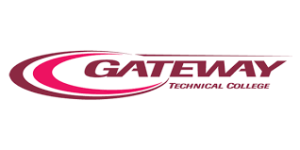 Greg is the architect of a variety of programs through the Gateway Fab Lab that support students, the community, and local industry. Greg currently serves on the Board of the United States Fab Lab Network (USFLN), has consulted on Fab Lab development through the National Science Foundation (NSF), and assisted numerous educational programs from K12 thru post-secondary in their Fab Lab programs. He is also heavily engaged with NC3 in developing training & curriculum for educators to leverage in the Fab Lab.
Greg is the architect of a variety of programs through the Gateway Fab Lab that support students, the community, and local industry. Greg currently serves on the Board of the United States Fab Lab Network (USFLN), has consulted on Fab Lab development through the National Science Foundation (NSF), and assisted numerous educational programs from K12 thru post-secondary in their Fab Lab programs. He is also heavily engaged with NC3 in developing training & curriculum for educators to leverage in the Fab Lab.
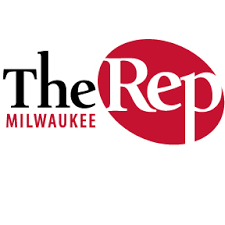 Jim Guy — Properties Director, Milwaukee Repertory Theater; President, Society of Properties Artisan Managers
Jim Guy — Properties Director, Milwaukee Repertory Theater; President, Society of Properties Artisan Managers
Jim has been a props professional since shortly after he joined the resident company of The Cleveland Play House almost 40 years ago, following brief stints elsewhere as a librarian and stage manager. Since then his work has appeared on and Off-Broadway, on tour, in print, on television, in museums and on the stages of theaters, opera and ballet companies across the country. For seven years he served as director of the MFA program in Properties Design and Management at the University of Illinois at Urbana-Champaign. Before that he ran his own freelance company, The Prop Guys, designing and producing props for industrial shows, photography, print, film, video, museums and the performing arts. At the top of the 1998-99 season he was once again seduced by the glamour of regional theater props, and joined Milwaukee Repertory Theater as their Properties Director, where he and his five-person team prop from twelve to fourteen shows in nine months. In what time is left, he still teaches, consults, serves as President of the professional not for profit prop masters’ association, the Society of Properties Artisan Managers (SPAM), and takes in a little freelance work. For many years he has been presenting seminars and master classes to educational and professional groups across the country on Firearms Use and Safety On Stage and on Props in the Production Process. He lives in Milwaukee with his longsuffering wife, artist and soft props artisan Margaret Hasek-Guy, their kids and a bunch of cats.
Mark and Linda Keane – co-founders, STUDIO 1032; co-creators, NEXT.cc
 Mark is Professor of Architecture at the School of Architecture and Urban Planning at the University of Wisconsin at Milwaukee and Director of the Frank Lloyd Wright Initiative; awarded the national AIAS Young Faculty of the Year in 2011 and honored at the Guggenheim, NYC, for his work with HABS and students at Taliesin East, WI, he teaches drawing as place-based engagement.
Mark is Professor of Architecture at the School of Architecture and Urban Planning at the University of Wisconsin at Milwaukee and Director of the Frank Lloyd Wright Initiative; awarded the national AIAS Young Faculty of the Year in 2011 and honored at the Guggenheim, NYC, for his work with HABS and students at Taliesin East, WI, he teaches drawing as place-based engagement.
Linda is Professor of Architecture and Environmental Design at The School of the Art Institute of Chicago where she initiated the development of a third accredited architecture program for Chicago, directed the City of Chicago Green Roof Website and works with thesis students in developing their final dissertations to contribute new knowledge to the built environment professions.
NEXT.cc is a STEAM by Design eLearning resource and non-profit that reaches people in fifty states and over 150 countries.
Steve Vande Zande – Bay View High School
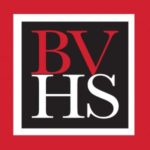 Bay View High School is MPS’s School of Creativity and Innovation with a STEAM focus. It holds a wing dedicated to design thinking complete with a makers space for students, shared artist and designer studio, and professional gallery. Bay View High School also offers a NAF academy that supports the building of Formula 1 race cars and a skateboard engineering project.
Bay View High School is MPS’s School of Creativity and Innovation with a STEAM focus. It holds a wing dedicated to design thinking complete with a makers space for students, shared artist and designer studio, and professional gallery. Bay View High School also offers a NAF academy that supports the building of Formula 1 race cars and a skateboard engineering project.
The majority of Steve’s time is spent in a school setting as a Program Implementer for Milwaukee Public Schools. Having worked as an education programmer for the Milwaukee Art Museum creating teen programs, and an educator of teacher training at Marquette University, Steve finds these experiences with students spanning early-childhood through adulthood as the impetus that continues to build his fascination with capturing moments in human development that are hard to put into words.
Steve received a B.A. in art education from the University of Wisconsin–Milwaukee and an M.S. degree in the area of leadership with an emphasis in the arts from Bank Street College of Education in conjunction with the Parsons New School for Design. In 2003 he was the recipient of the Outstanding Educator of the Year award from the Wisconsin Art Education Association, and Excellence in Education by Milwaukee Public Schools in 2004. In 2009, Steve was awarded “Outstanding Faculty Lecturer for Educational Policy and Leadership” from the Marquette University College of Education. In 2012 he was named mentor of the year by the Southern Graphics council, In 2014 he was the honored as a Friend of Art from the Milwaukee Arts Board.
Agenda
5:30 – 6:00 Grab something to eat and drink, say hello
6:00 – 8:30 Let’s learn from each other
Food and beverage will be provided. There is no charge for participation but space is limited!
The Collab Lab will be held in the innovation space at Ward 4, 333 North Plankinton Avenue, Milwaukee, WI. Space provided courtesy of The Commons.
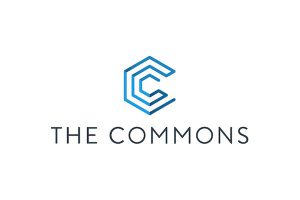


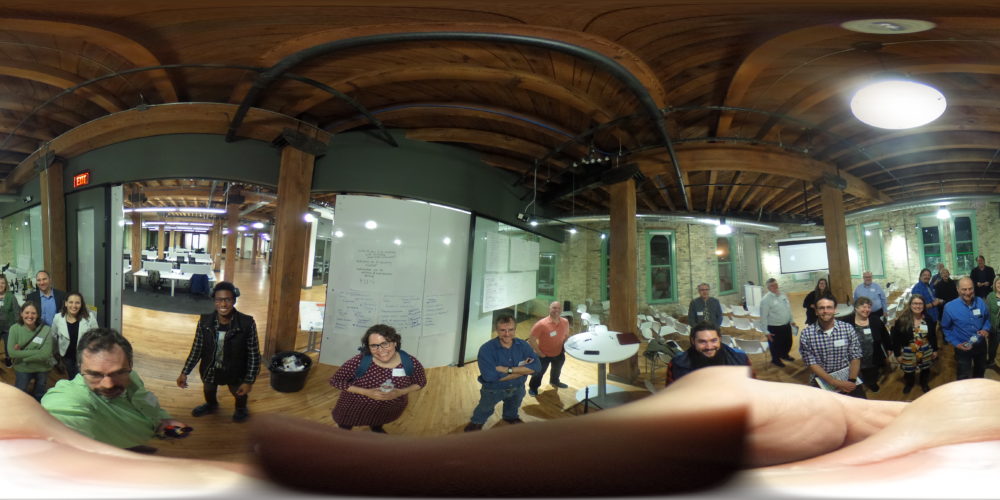

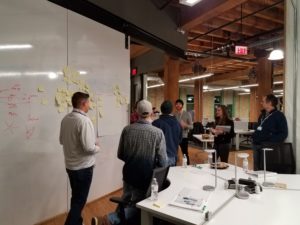
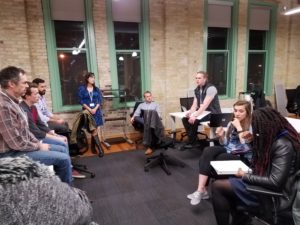
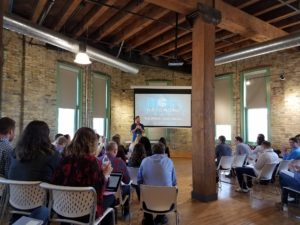 We partnered with Betty Brinn Children’s Museum to formulate this challenge over the past weeks. We are challenging a team to create a pitch for a sustainable startup to provide surplus materials to the Betty Brinn Children’s Museum’s Maker Initiative as well as area school’s maker programs. We spent Sunday afternoon at Ward 4 with Carrie Wettstein and Mike Cook from Betty Brinn to introduce our challenge and meet prospective team members.
We partnered with Betty Brinn Children’s Museum to formulate this challenge over the past weeks. We are challenging a team to create a pitch for a sustainable startup to provide surplus materials to the Betty Brinn Children’s Museum’s Maker Initiative as well as area school’s maker programs. We spent Sunday afternoon at Ward 4 with Carrie Wettstein and Mike Cook from Betty Brinn to introduce our challenge and meet prospective team members.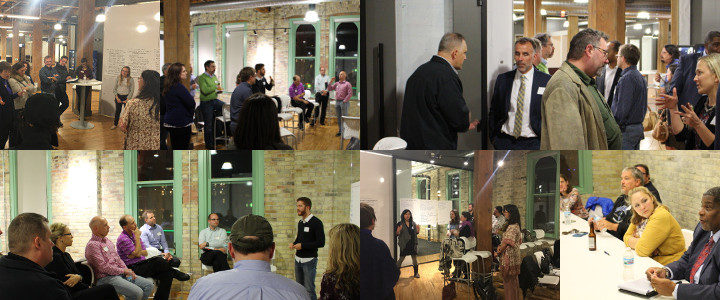
 Armen established and teaches in the Milwaukee Area Technical College Entrepreneurship Center which is opening a new makerspace on 8th Street & National Ave in Milwaukee. He authored The Entrepreneur’s Launch Guide (Kendall-Hunt 2012) and Entrepreneurship Drills (Kendall-Hunt 2017). He is also an adjunct faculty member in the Alverno ollege MBA program, teaching Innovation and Entrepreneurship. He also was part of the leadership team on one of the first mobile payments apps, Talipayments.
Armen established and teaches in the Milwaukee Area Technical College Entrepreneurship Center which is opening a new makerspace on 8th Street & National Ave in Milwaukee. He authored The Entrepreneur’s Launch Guide (Kendall-Hunt 2012) and Entrepreneurship Drills (Kendall-Hunt 2017). He is also an adjunct faculty member in the Alverno ollege MBA program, teaching Innovation and Entrepreneurship. He also was part of the leadership team on one of the first mobile payments apps, Talipayments. Emily is currently a doctoral student at the University of Wisconsin-Madison’s School of Education. She studies Curriculum and Instruction, and her specific interests focus on digital tools, interest-driven learning, STEAM, and innovative teacher learning. She is a former K-12 public school Literacy Specialist and English teacher, and her favorite grades to teach were 7th and 8th grade. In her teaching, she explored the uses of project-based learning, multi-modal tools, and student-led curricular models.
Emily is currently a doctoral student at the University of Wisconsin-Madison’s School of Education. She studies Curriculum and Instruction, and her specific interests focus on digital tools, interest-driven learning, STEAM, and innovative teacher learning. She is a former K-12 public school Literacy Specialist and English teacher, and her favorite grades to teach were 7th and 8th grade. In her teaching, she explored the uses of project-based learning, multi-modal tools, and student-led curricular models. Greg is the architect of a variety of programs through the Gateway Fab Lab that support students, the community, and local industry. Greg currently serves on the Board of the United States Fab Lab Network (
Greg is the architect of a variety of programs through the Gateway Fab Lab that support students, the community, and local industry. Greg currently serves on the Board of the United States Fab Lab Network (
 Mark is Professor of Architecture at the School of Architecture and Urban Planning at the University of Wisconsin at Milwaukee and Director of the Frank Lloyd Wright Initiative; awarded the national AIAS Young Faculty of the Year in 2011 and honored at the Guggenheim, NYC, for his work with HABS and students at Taliesin East, WI, he teaches drawing as place-based engagement.
Mark is Professor of Architecture at the School of Architecture and Urban Planning at the University of Wisconsin at Milwaukee and Director of the Frank Lloyd Wright Initiative; awarded the national AIAS Young Faculty of the Year in 2011 and honored at the Guggenheim, NYC, for his work with HABS and students at Taliesin East, WI, he teaches drawing as place-based engagement. Bay View High School is MPS’s School of Creativity and Innovation with a STEAM focus. It holds a wing dedicated to design thinking complete with a makers space for students, shared artist and designer studio, and professional gallery. Bay View High School also offers a
Bay View High School is MPS’s School of Creativity and Innovation with a STEAM focus. It holds a wing dedicated to design thinking complete with a makers space for students, shared artist and designer studio, and professional gallery. Bay View High School also offers a 
